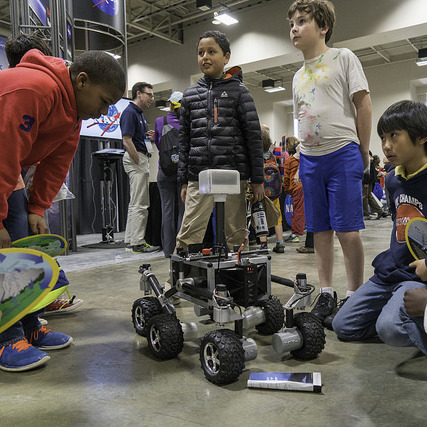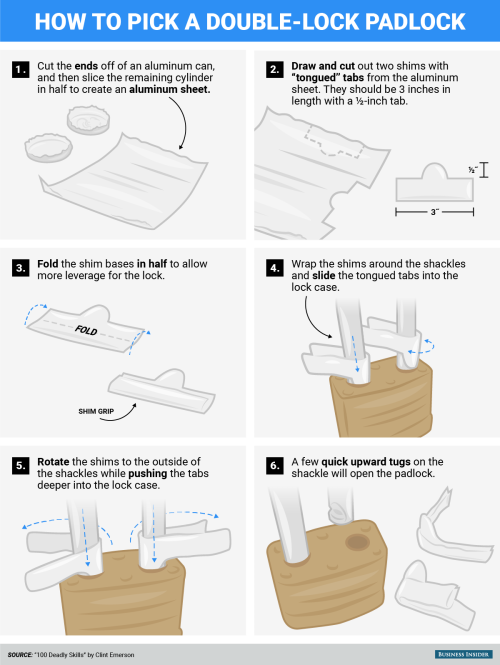WHO’S TO BLAME?
WHO’S TO BLAME?

R E V E R S E
More Posts from Pajman20 and Others
http://virtualengineering.tech

Sm:)e
Photo by Lisa Melvin
http://virtualengineering.tech

A Laser Strike at the Galactic Center
js
http://virtualengineering.tech

A Laser Strike at the Galactic Center
js
http://virtualengineering.tech

http://virtualengineering.tech

VIRTUALTECHNOLOGY IS NOW IN THE HANDS OF KIDS!
Five NASA Technologies at the 2017 Consumer Electronics Show
This week, we’re attending the International Consumer Electronics Show (CES), where we’re joining industrial pioneers and business leaders from across the globe to showcase our space technology. Since 1967, CES has been the place to be for next-generation innovations to get their marketplace debut.
Our technologies are driving exploration and enabling the agency’s bold new missions to extend the human presence beyond the moon, to an asteroid, to Mars and beyond. Here’s a look at five technologies we’re showing off at #CES2017:
1. IDEAS
Our Integrated Display and Environmental Awareness System (IDEAS) is an interactive optical computer that works for smart glasses. The idea behind IDEAS is to enhance real-time operations by providing augmented reality data to field engineers here on Earth and in space.

This device would allow users to see and modify critical information on a transparent, interactive display without taking their eyes or hands off the work in front of them.

This wearable technology could dramatically improve the user’s situational awareness, thus improving safety and efficiency.

For example, an astronaut could see health data, oxygen levels or even environmental emergencies like “invisible” ethanol fires right on their helmet view pane.

And while the IDEAS prototype is an innovative solution to the challenges of in-space missions, it won’t just benefit astronauts—this technology can be applied to countless fields here on Earth.
2. VERVE
Engineers at our Ames Research Center are developing robots to work as teammates with humans.

They created a user interface called the Visual Environment for Remote Virtual Exploration (VERVE) that allows researchers to see from a robot’s perspective.

Using VERVE, astronauts on the International Space Station remotely operated the K10 rover—designed to act as a scout during NASA missions to survey terrain and collect science data to help human explorers.

This week, Nissan announced that a version of our VERVE was modified for its Seamless Autonomous Mobility (SAM), a platform for the integration of autonomous vehicles into our society. For more on this partnership: https://www.nasa.gov/ames/nisv-podcast-Terry-Fong
3. OnSight
Did you know that we are leveraging technology from virtual and augmented reality apps to help scientists study Mars and to help astronauts in space?

The Ops Lab at our Jet Propulsion Laboratory is at the forefront of deploying these groundbreaking applications to multiple missions.

One project we’re demonstrating at CES, is how our OnSight tool—a mixed reality application developed for the Microsoft HoloLens—enables scientists to “work on Mars” together from their offices.

Supported by the Mars 2020 and Curiosity missions, it is currently in use by a pilot group of scientists for rover operations. Another HoloLens project is being used aboard the International Space Station to empower the crew with assistance when and where they need it.

At CES, we’re also using the Oculus Rift virtual reality platform to provide a tour from the launchpad at our Kennedy Space Center of our Space Launch System (SLS). SLS will be the world’s most powerful rocket and will launch astronauts in the Orion Spacecraft on missions to an asteroid and eventually to Mars. Engineers continue to make progress aimed toward delivering the first SLS rocket to Kennedy in 2018.
4. PUFFER
The Pop-Up Flat Folding Explorer Robot, PUFFER, is an origami-inspired robotic technology prototype that folds into the size of a smartphone.

It is a low-volume, low-cost enhancement whose compact design means that many little robots could be packed in to a larger “parent” spacecraft to be deployed on a planet’s surface to increase surface mobility. It’s like a Mars rover Mini-Me!

5. ROV-E
Our Remote Operated Vehicle for Education, or ROV-E, is a six-wheeled rover modeled after our Curiosity and the future Mars 2020 Rover.

It uses off-the-shelf, easily programmable computers and 3D-printed parts. ROV-E has four modes, including user-controlled driving to sensor-based hazard-avoidance and “follow me” modes. ROV-E can answer questions about Mars and follow voice commands.

ROV-E was developed by a team of interns and young, up-and-coming professionals at NASA’s Jet Propulsion Laboratory who wanted to build a Mars rover from scratch to help introduce students and the public to Science, Technology, Engineering & Mathematics (STEM) careers, planetary science and our Journey to Mars.
Make sure to follow us on Tumblr for your regular dose of space: http://nasa.tumblr.com
http://virtualengineering.tech

http://virtualengineering.tech



How to pick locks and break padlocks
WHAT THE FUTURE HOLD
So have you heard that thing about andromeda colliding with the milky way? It would obviously happen a LONG time from now, but I'm wondering if our solar system will even last long enough to see it. Like will our sun last long enough to get us there?
It will happen quite a long time from now (about four billion years), but yes, our sun will still be there. It won’t be a red giant yet, but it will be considerably warmer and brighter than it is now, as it will be nearing the end of its life as a main sequence star.
For a while beforehand, Andromeda will grow larger than larger. At some point, the Milky Way and Andromeda will get so close that they will begin to gravitationally distort each other. The night sky will look like this (albeit somewhat dimmer to our eyes):

However, by this time, the sun will be about 40% more luminous. The habitable zone, a ring around the Sun where liquid water (and life as we know it) can exist, will have moved further out into the solar system. Earth will be too warm for liquid water. The oceans will have evaporated, and life on Earth will fade away into memory. Of course, humans are getting more and more advanced all the time. Considering how far we’ve come in just a hundred years, if we don’t manage to kill ourselves first (which is a big if), and if the current trends in the rate of advancement in technology hold, it’s virtually certain that our technology will be so advanced that preserving life on Earth will be trivial.
-
 freackthejester reblogged this · 2 years ago
freackthejester reblogged this · 2 years ago -
 killykstudio liked this · 4 years ago
killykstudio liked this · 4 years ago -
 ajourneyintomysoul reblogged this · 4 years ago
ajourneyintomysoul reblogged this · 4 years ago -
 madagazagawaga liked this · 4 years ago
madagazagawaga liked this · 4 years ago -
 w-e-y liked this · 4 years ago
w-e-y liked this · 4 years ago -
 orchideerouge liked this · 5 years ago
orchideerouge liked this · 5 years ago -
 jamiepannn liked this · 5 years ago
jamiepannn liked this · 5 years ago -
 xylodn liked this · 5 years ago
xylodn liked this · 5 years ago -
 msnbabygurl reblogged this · 5 years ago
msnbabygurl reblogged this · 5 years ago -
 raizinghell liked this · 5 years ago
raizinghell liked this · 5 years ago -
 kkklaudis liked this · 5 years ago
kkklaudis liked this · 5 years ago -
 retrolover84 liked this · 5 years ago
retrolover84 liked this · 5 years ago -
 thekidrose reblogged this · 5 years ago
thekidrose reblogged this · 5 years ago -
 breakingjustxn reblogged this · 5 years ago
breakingjustxn reblogged this · 5 years ago -
 rosemv96 liked this · 5 years ago
rosemv96 liked this · 5 years ago -
 6wrys6vik6ing reblogged this · 5 years ago
6wrys6vik6ing reblogged this · 5 years ago -
 6wrys6vik6ing liked this · 5 years ago
6wrys6vik6ing liked this · 5 years ago -
 kittych0ww reblogged this · 5 years ago
kittych0ww reblogged this · 5 years ago -
 guy-montag-hates-onision reblogged this · 6 years ago
guy-montag-hates-onision reblogged this · 6 years ago -
 cronus-ripoff liked this · 6 years ago
cronus-ripoff liked this · 6 years ago -
 littlecrybabysivan liked this · 6 years ago
littlecrybabysivan liked this · 6 years ago -
 travelling-spirit-love liked this · 6 years ago
travelling-spirit-love liked this · 6 years ago -
 allthemgraces liked this · 6 years ago
allthemgraces liked this · 6 years ago -
 stinkykawas liked this · 6 years ago
stinkykawas liked this · 6 years ago -
 unpredictable-blog reblogged this · 6 years ago
unpredictable-blog reblogged this · 6 years ago -
 unpredictable-blog liked this · 6 years ago
unpredictable-blog liked this · 6 years ago -
 eleias reblogged this · 6 years ago
eleias reblogged this · 6 years ago -
 poisonnox liked this · 6 years ago
poisonnox liked this · 6 years ago -
 souabloom liked this · 6 years ago
souabloom liked this · 6 years ago -
 camiidesandoval liked this · 6 years ago
camiidesandoval liked this · 6 years ago -
 prplym liked this · 6 years ago
prplym liked this · 6 years ago -
 divinebloodspirit liked this · 6 years ago
divinebloodspirit liked this · 6 years ago -
 thezombiequeenwilleatyourbrains reblogged this · 6 years ago
thezombiequeenwilleatyourbrains reblogged this · 6 years ago -
 thezombiequeenwilleatyourbrains liked this · 6 years ago
thezombiequeenwilleatyourbrains liked this · 6 years ago -
 ouchtooru liked this · 6 years ago
ouchtooru liked this · 6 years ago -
 imbelly liked this · 6 years ago
imbelly liked this · 6 years ago -
 crownkinged liked this · 6 years ago
crownkinged liked this · 6 years ago